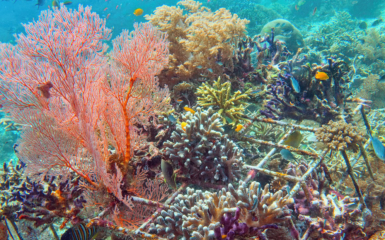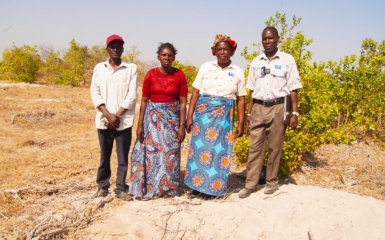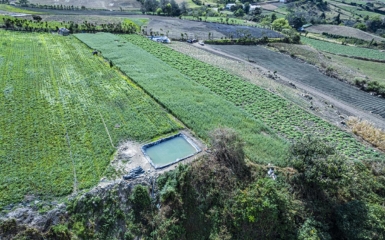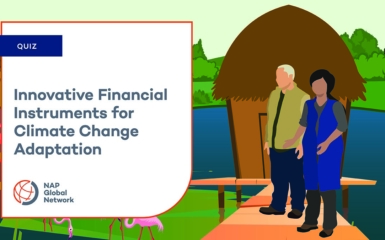Saint Lucia’s NAP process is advancing two parallel tracks: policy development through engagement and public sensitization. View the story Broad-Based Engagement Community Engagement Youth Engagement Looking Ahead How Arts, Culture, and Community Engagement Are Driving Climate Resilience in Saint Lucia Saint Lucia’s national adaptation plan (NAP) process is advancing along two parallel tracks: policy development […]
Category: Analysis, communications and knowledge products
“My Photos Are Giving a Voice to the People”: The Rwandan women shaping adaptation plans
On the Front Lines View the story “My Photos Are Giving a Voice to the People” The Rwandan women shaping adaptation plans Alice Kayibanda Kayisire Alice Kayibanda Kayisire In the rolling hills of Rwanda, the future of climate change adaptation is being envisioned through the lens of those who experience climate risks first-hand. Envisioning Resilience […]

Climate Change Adaptation Investment Plans: Frequently Asked Questions
By Maribel Hernández and Aurélie Ceinos
As the adverse impacts of climate change on communities and the economy become more evident, there is an urgent need for countries to efficiently mobilize finance and accelerate the implementation of their priority adaptation measures to manage these risks and promote sustainable development in a changing climate. The Global Goal on Adaptation (GGA), introduced as […]

Taking Stock of Nature’s Role in National Adaptation Plans
Anika Terton, Jeffrey Qi, Nicole Jang
Nature is essential for building resilience to climate change. Many countries’ national adaptation plans (NAPs) have focused on nature to scale up actions for ecosystems to help people adapt—for example, by protecting wetlands and restoring mangroves to help withstand the impacts of floods. Given the importance of ecosystems across global environmental agendas and the […]

Photo Essay from Zambia: In the trenches in the fight against drought
Zambia’s NAP sets out a roadmap for the country to cope with frequent droughts. Discover how communities work to boost climate change adaptation planning and implementation.
In the Trenches in the Fight Against Drought
Two Zambian communities, Magoye and Mutema Bweenga, are advancing climate adaptation projects as part of the adaptation priorities set out in the country’s NAP. These initiatives showcase climate resilience in an agricultural region severely impacted by a devastating drought. View the story In the Trenches in the Fight Against Drought How Zambia is scaling up […]
Building Resilience in Times of Drought: Protecting water and livelihoods for farming families
Costa Rica boosts rural communities’ resilience in the face of threats to their water security because of climate change. View the story Costa Rica’s NAP NAP Implementation Direct Benefits Enhancing Agricultural Resilience LEA EN ESPAÑOL Building Resilience in Times of Drought: Protecting water and livelihoods for farming families Photo essay on the implementation of […]

Construyendo Resiliencia en Tiempos de Sequía
Por: Ivonne López Arce, Analista Político, Red Global del PNA/IISD y Vesalio Mora, Director de la Comisión para el Ordenamiento y Manejo de la Cuenca del Río Reventazón
Foto ensayo sobre la implementación del eje 5 del Plan Nacional de Adaptación al Cambio Climático de Costa Rica 2022-2026.
Construyendo Resiliencia en Tiempos de Sequía
Con el apoyo de la Red Global del PNA, el Gobierno de Costa Rica está construyendo reservorios de agua cerca de las comunidades donde las familias agricultoras están lidiando con los niveles mínimos récord registrados en la cuenca del río Reventazón debido al cambio climático. Esta iniciativa implementada por Costa Rica forma parte de las […]

Quiz | Innovative Financial Instruments for Climate Change Adaptation
By Deborah Murphy, Senior Associate, NAP Global Network Secretariat (IISD)
Significant financial resources are required now and in the coming decades for people and systems to adapt to a changing climate. Developing countries need about USD 212 billion per year up to 2030 to address their adaptation needs, yet adaptation finance flows were only USD 56 billion in 2021-2022.1 Private sector investment has a pivotal […]